Citizens give Pelham school board mixed reviews on banning staff from wearing political symbols
After a week of controversy surrounding Superintendent Dr. Cheryl Champ’s decision to ban all political clothing for staff, many Pelham residents and citizens of other towns attended the Pelham Board of Education’s Wednesday meeting, with 13 people participating in the public comments. Since the board can only allow 34 attendees in the middle school gym at once due to Covid-19 restrictions, some waited outside the building for up to 90 minutes in order to comment, and one speaker noted that some individuals left due to the cold and the wait time.
On Nov. 9—after the new policy had already been sent to staff but not further publicized—the union representing New York City detectives wrote a letter to Champ strongly opposing her ban on a sweatshirt that has a thin blue line flag on its sleeve and commemorates the late George Caccavale, a New York Transit Police detective who was murdered in 1976. The debate over the thin blue line flag and other symbols seen on school staff then exploded in local Facebook groups and in local and national media outlets.
The comments at the meeting were split relatively evenly between support and concern for Champ’s decision.
Carla Caccavale, the daughter of George Caccavale and a Pelham resident, criticized Champ’s letter clarifying that the ban extended to all clothing with political speech. “The communication which was sent to the community after this all went down might as well have said ‘Did you miss the memo? We banned both,’” she said. “That was too little, too late. If we were expected to take that and be satisfied, I think you now know that many are not willing to do so.”
Caccavale said the story has gained international recognition, including coverage by DailyMail.com, NewsBreak and Fox News Channel, and she has been contacted by people around the world who have been offended by Champ’s decision. “We all make mistakes, Dr. Champ,” said Caccavale. “The world is watching us right now right here in Pelham. How we respond to this can set a powerful example to show many, including our very impressionable children… Pelham already missed the mark on one very teachable moment. Let’s seize the opportunity to capture the next one.”
One commenter, who could not be identified due to the nature of the video feed, said, “This started because children expressed fear and concern. And these are not children with quotes, because it’s been alleged that maybe these are not children who said it. These were children who said it, and we heard them… Right now, what’s upsetting to me is that we have taken an issue that involves students and their comfort level and it’s now become an international media sensation. Because if it’s one, two or three children who say they are fearful of approaching a staff member because of a symbol they see on their apparel, it is our job as adults to address that. It is not on the children to figure out, ‘Wow, this is a teachable moment.’ It’s just not.”
Another commenter noted the heavy police presence at the meeting. “As a Hispanic resident of Pelham, if you’re wondering why people, especially our children and people of color, are feeling intimidated, look around. This is intimidating. This meeting is intimidating. Maybe people find it threatening that the district made an unintentional misstep, and how they initially implemented the policy, but this is where we’ve landed. There are numerous people here that aren’t even from Pelham… It’s a travesty that our community members are locked out of this very meeting that benefits us and our children, in Pelham, not 80% of the people sitting behind me.”
Board President Jessica DeDomenico, attending the meeting via video, said, “The timeline of events has been misconstrued on social media and misrepresented on outside media organizations, and the resulting uproar has forced an onslaught of threatening and disrespectful messages with vulgar language that are menacing in nature to our superintendent and to our board. We recognize the need for tough conversations around these issues, but I hope we can all agree this is not productive in any way.”
Champ said that when schools opened this year several staff members wore masks bearing the thin blue line flag, and she “began to receive several complaint from students and parents that the symbol, not the people, the symbol, made them uncomfortable, as it has become associated with threatening political alliances. I then did some research to educate myself on the history and the various meanings of the various blue line flags.”
“While this symbol means very different things to different people,” Champ said. “Historically the thin blue line (has) a very positive history, the connection the students and families are now drawing between the flag and groups that espouse hostile views could not be ignored.”
Champ decided to ban staff members from wearing clothing that bore the thin blue line flag. Shortly after this decision was made, several staff members wore t-shirts that said “Vote” and had the names of black victims of police brutality on them. “After the shirts were worn, I was approached with similar concerns that these shirts too violated the political speech policy, given the political connotations of the Black Lives movement,” said Champ.
Champ then held two days of open office hours with staff and decided to ban all attire with political speech. At Wednesday’s meeting, she apologized for not “enforcing this policy evenly” initially, adding that “we addressed these issues as they were brought to our attention, and these decisions were not in any way related to the presidential election or to my own political opinions.”
“I know that the children of this school embrace the police and embrace the police in this community and this department, and they should, because we’re here to protect them,” said a commenter. “That’s our job. This (the thin blue line flag) is not meant to offend or hurt anyone in our communities.” He said “a simple fix is to educate the children that the flag on that sweatshirt is not there to offend anyone, and it’s just there to support law enforcement and those people in law enforcement that lost their life in the line of duty… I spoke to the detectives and the police officers that work in this town, and they’re willing to do the same, to speak to the children and educate them on what this flag means in regards to policing.”
Another person expressed his disagreement with Champ’ s decision. “A lot of people from the simple residents are not speaking up,” he said. “A lot of us support the blue line flag… Dr. Champ, I respect that you’ve tried to make what you felt were correct decisions, but I’ll highly recommend next time you have more conversations with more people. There are a lot of us in this town that feel like a lot of things are getting shoved down our throats and our children’s’ throats. If a child is in fear, a child should be taught, especially something like this, that they don’t have to have that level of fear, that if they talk to police, perhaps the school would bring the police in a little more… that they don’t have to have that kind of fear.”
“I tell my son and I have since he’s three. Don’t be afraid,” he said. “And I think we need to teach our children that they don’t have to be feared of. We know there have been issues that have gone on over the years, but it’s an incredibly small amount of officers that have done these things. The vast majority are here to help us.”
Champ read a letter from the two Pelham police departments restating the partnership between the Pelham schools and law enforcement, and Vice President Sue Bratone Childs read a statement from members of the town council, Village of Pelham Manor officials and the board of education and a statement from Village of Pelham Mayor Chance Mullen, all underscoring the positive relationship that exists between the school district and the police departments.
Champ gave more information on the district’s formula for Covid-19 school closure, explaining that a school switching to full-virtual learning depends on the scope of the exposure and contact tracing. Julia Chung, assistant superintendent for pupil personnel services, said the district continues to follow guidelines set by the Westchester and New York State health departments, as well as the Centers for Disease Control and Prevention. She said that close contact is currently defined as spending ten or more minutes in an enclosed space with an individual who has tested positive for Covid-19, regardless of the distance between individuals within the enclosed space.
The board’s next meeting will be held on Dec. 2 at 7:30 p.m. in the middle school gym. Video of Wednesday’s meeting will be posted here.
Zoe is a graduate of the Pelham Memorial High School class of 2021. Aside from her work at the Examiner, she competes in the high jump for the track and...



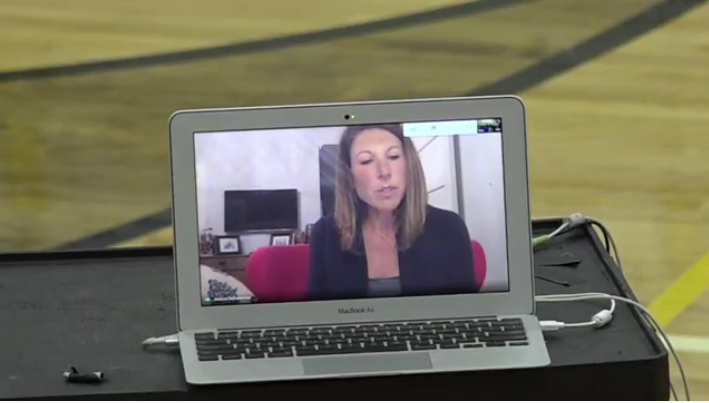

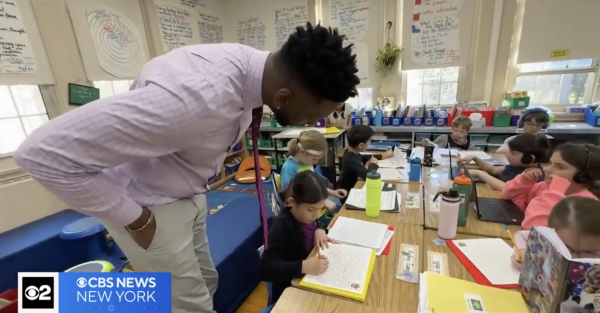


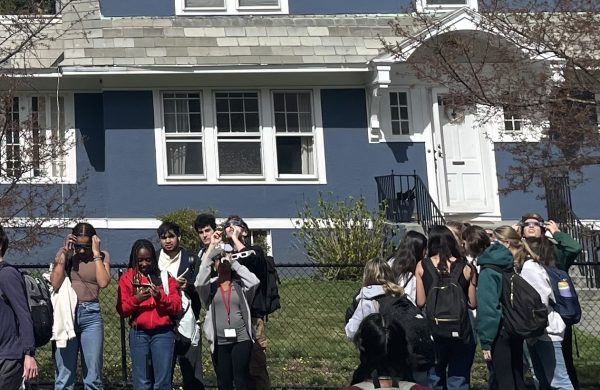
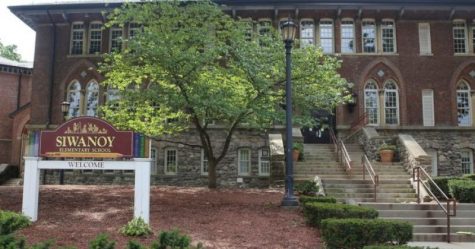
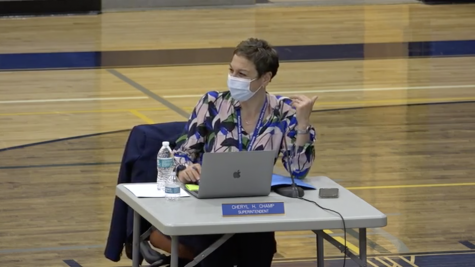
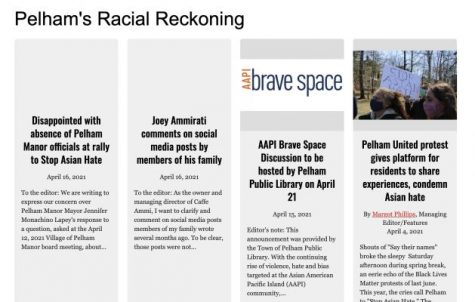
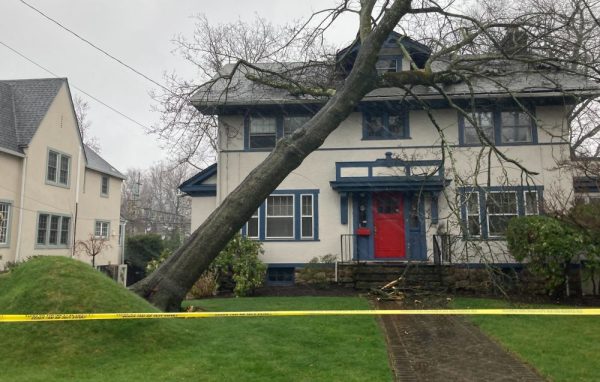
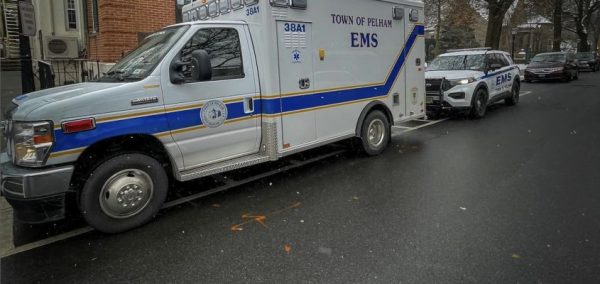

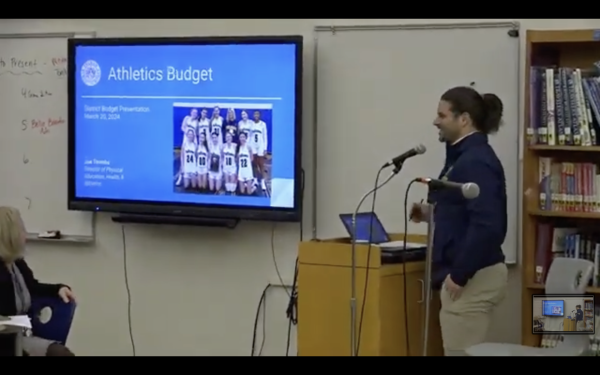
Daniella Cherner • Nov 21, 2020 at 7:52 pm
Something I keep seeing reiterated is “respect both sides” “be tolerant of other’s views” etc etc. Can’t really respect someone’s views when those views either encourage or condone the oppression, discrimination, and outright murder of other people, so.
Pelham was and still is a sundown town. Y’all see the cones put up at night, at Fifth and Boulevard, at Boulevard and Kings Highway. Talk to any older cop about how outsiders used to get the s&^t kicked out of them if they were hanging around town. Why don’t we have any basketball courts at any of our parks? Or even at school playgrounds? Why is there maybe one or two students of color in any given classroom?
Why are the words “fag” and “lesbian” thrown around incessantly in the halls, in the bathrooms? Why do I remember one high school, self-avowed white supremacists student in early 2016, saying loudly he hoped Trump would get elected, that he was going to make a task force to get rid of illegals, and he himself wanted to “throw the fx5l#)g Mexicans over the wall”, in front of school security personnel, who did damn nothing, cause boys will be boys right? Ah, they’re just kids, parroting stupid s#*t, right?
Whatever the symbol used to mean, it no longer means that. It is a visible symbol of hate, a symbol of police power and control, especially in the face of the black lives matter movement. There’s a reason “blue lives matter” and “all lives matter” only became popularized after the rise of the black lives matter, in direct opposition to it.
(To the staff of the Examiner: keep kicking, y’all, I’m proud of y’all and you’re doing better than anything I could’ve ever imagined)
Matthew Scampoli • Nov 20, 2020 at 11:35 am
We all feel a great need to be confirmed in our opinions. However, I think the real “teachable moment” in this unfortunate situation is that it is important that we, as neighbors, learn to be tolerant of each other’s viewpoints and that we treat each other civilly, and in a moderate and fair manner. This is a Christian value, known as tolerance. It served us well as a young country, and helped us set up the greatest government the world has ever known. But we’ve strayed from the founding principles that made us great, and for that, we’ve only ourselves to blame.
But neighbors, don’t lose hope. This is not over yet. In the court of public opinion, we may not have won the battle, but we can win the war. It starts with us. We’re stronger as a team. Let’s band together with a shared purpose. Let’s show the world that we are indeed better together, that although we’re passionate in our beliefs, we’re equally tolerant of each other’s viewpoints. Each of us has a role and a stake in making these efforts succeed. Will we choose to dig in our heels and resist, or come together and formulate new solutions?
Pelham has a long history of community and tolerance. It was a Pelham resident, Michael Schwerner, a graduate of Pelham Memorial High School, who worked and died fighting for civil rights for African Americans. He was awarded the Presidential Medal of Freedom posthumously for his efforts. According to his family, Michael believed all people were essentially good. Can we carry his proud legacy forward?
Let’s view this challenging time as our chance to make a mark on our town’s proud timeline. This is our opportunity. This is our moment.
Bob Shepherd • Nov 19, 2020 at 3:45 pm
Again I reiterate, which ever side you take from the many sides on this latest sad Pelham schools’ episode, the truth of the matter is that it should never have left the surrounds of the school complex in the first place. Not only has it become first, second and third hand gossip around the Pelhams, but it is now out there in the global media for all to see.
That for me as a concerned Pelham father, puts a big fat bulls eye onto Pelham schools for any angry and unstable individual that would take a side, and take advantage of the war on words in order to make a name for one’s self.
In order to keep our children safe at school, the “adults” within the school need to have the ability to agree to disagree in an agreeable manner. Communication for grown ups would be the way to go. But no…let’s just blow this out of all proportion, make a mountain out of a mole hill, and let the world know how adults behave within the Pelham schools’ system and the Pelham community by inviting the media to cover the story.
ALL THINGS Pelham schools should be first and foremost about our children. Every interaction between adults, school staff and parents alike, no matter the subject matter should come with the ultimate forethought of our children’s safety in mind…each and every time.
As if COVID isn’t enough to cope with, we in Pelham now have something far more dangerous in my opinion. The fact that there is a split and I’ll even use the strong word of hatred within our small community here is something that I couldn’t even comprehend before settling in this tiny town some seven years ago. Pelham together it most certainly is not.
As an aside…I sincerely hope that no one is thinking of taking the school to court over this (given we live in the most litigious country on the planet), as it’s really the Pelham tax payer that you would be countering. Given that I am one, I want to see my precious tax dollars going to the right things for the school like education and not litigation…all for the sake of Pelham’s wonderful children, as right now, they don’t have a say in this mess, and most certainly don’t deserve today’s very sad scenario.
Come on adults of Pelham and Pelham schools, those concerned please pull together and not any further apart…communicate with purpose, and agree as one to move forward. Because right now, I do NOT want to be sending my child to a Pelham school where the adults in front of the children cannot be seen as one. The consequences of such could be dire.